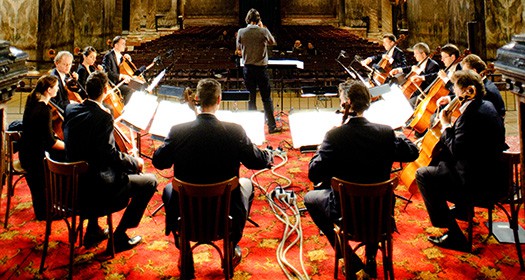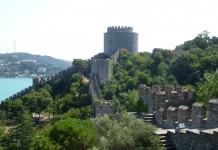The Istanbul Music Festival is always a highlight of the summer. This is the forty-third year of the festival, and the central theme this time around is “Cultural Landscapes,” emphasizing how the universal culture of music brings together musicians, instruments and audiences of all cultures, ages and musical tastes.
Twenty-five performances took place throughout the month of June—all were the best of their kind. Ideally, a person without time or financial constraints shouldn’t have missed any of them. However, as with all things in life, I was forced to make some tough choices. After much consideration, I managed to narrow my list down to eight performances.

Just to give a little background: The cello is my favorite instrument. The high but deep timbre of the A-string (for the non-nerds, that is the highest string of the cello) is a sound that I would not trade for that of any other instrument. From Bloch to Bach, there is nothing else that captivates me quite like the resonance of notes extracted from that one string. So, naturally The 12 Cellists of Berlin Philharmonic on 1 June was at the top of my list of must-see performances.
There was much anticipation in the garden of Hagia Irene as the audience waited for the performers to take stage. The twelve cellos took on the roles of various sections so that essentially the brass, percussion and winds were all represented by the large string instruments. The program began with Bach’s “Brandenburg Concerto No.6” in B-flat Major.. The lively piece provided a preview of the evening yet to come, as we witnessed an instrumentally homogenous ensemble transformed into a polyphonic orchestra.
Seventeen minutes of Schumann followed with six selections from his work “Forest Scenes.” The cellos alternated parts and sections, but my overall observation was that the group to the left took on the lower notes—as in the role of the second violins, while the six cellos in the center held the ensemble together. The group of three to the right took on the high notes imitating the first-chair violins. An allegro piece entitled “Entry” was followed by “Hunters on the Lookout”, “Lonely Flowers”, “Haunted Place”, “Hunting Song” and “Farewell.”
The mysterious and enticing arrangements of the well-known piece “Pavane” by Fauré were made all the more magical by the deep, mysterious timbres of the cello.
The final piece—and in my opinion the highlight of the evening —was the “March of the Blue Butterflies” by Turkish composer Tayfun Erdem. It was light and swift, yet adamant and sad.. Perhaps it was a reflection of the sorrow of the brevity of the life of a butterfly—a dance, graceful and sustained, suspended in the air. It then flutters, leading to a shudder, and then a final collapse. It could not have been portrayed more elegantly or accurately.
We could not have asked for more, but the 12 Cellists were generous, treating us to two encores. The first was the all-time hit “Libertango” by Astor Piazzola , followed by a Glen Miller piece. Thus ended the first of many enchanting evenings at the 43rd Istanbul Music Festival.
Featured Image Source: IKSV










